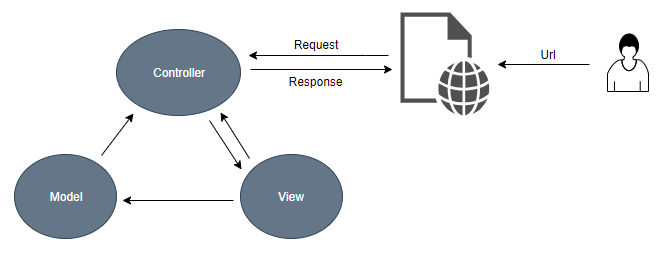EF 6 + MVC Overview
What is MVC?
MVC stands for Model, View, and Controller. MVC separates the application into three components
- Model: Responsible for maintaining application data and business logic.
- View: User interface of the application, which displays the data.
- Controller: Handles user's requests and renders appropriate View with Model data.

The MVC design pattern has been around for a few decades, and it's been used across many different technologies.
What is ASP.NET MVC?
ASP.NET MVC is a web development framework developed by Microsoft which combines the features of MVC (Model-View-Controller) architecture.
- It is an alternative to traditional ASP.NET Web Forms.
- It is built on the top of ASP.NET, so developers enjoy almost all the ASP.NET features while building the MVC application.
- It is a framework for building scalable, standards-based web applications using well-established design patterns and the power of ASP.NET and the .NET Framework.
Features
- Separates data access logic from display logic and applies itself extremely well to web applications.
- Explicit separation of concerns adds a small amount of extra complexity but the extraordinary benefits outweigh the extra effort.
- Integrated Scaffolding system extensible via NuGet
- HTML 5 enabled project templates
- Expressive Views including the new Razor View Engine
- Powerful hooks with Dependency Injection and Global Action Filters
- Rich JavaScript support with unobtrusive JavaScript, jQuery Validation, and JSON binding
What is Entity Framework 6?
Entity Framework 6 (EF6) is an open source object-relational mapper (ORM) for ADO.NET which is a part of .NET Framework with many years of feature development and stabilization.
- It enables developers to write applications that interact with data stored in relational databases using strongly-typed .NET objects.
- It takes care of creating database connections and executing commands.
- It also automatically materialize query results to your application objects.
- It is also the responsibility of EF to keep track of changes to those objects, and when instructed, it will also persist those changes back to the database for you.
